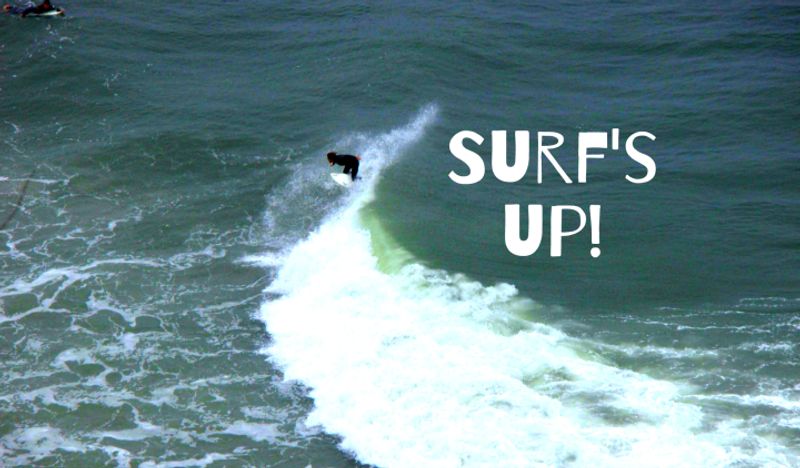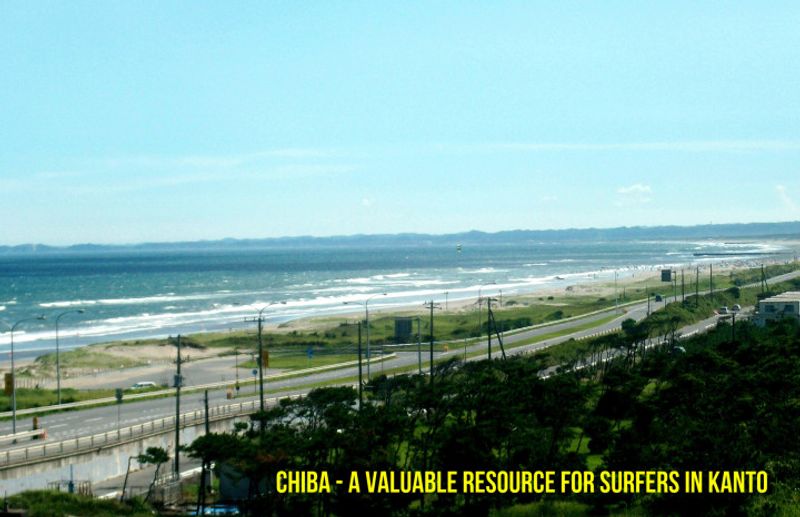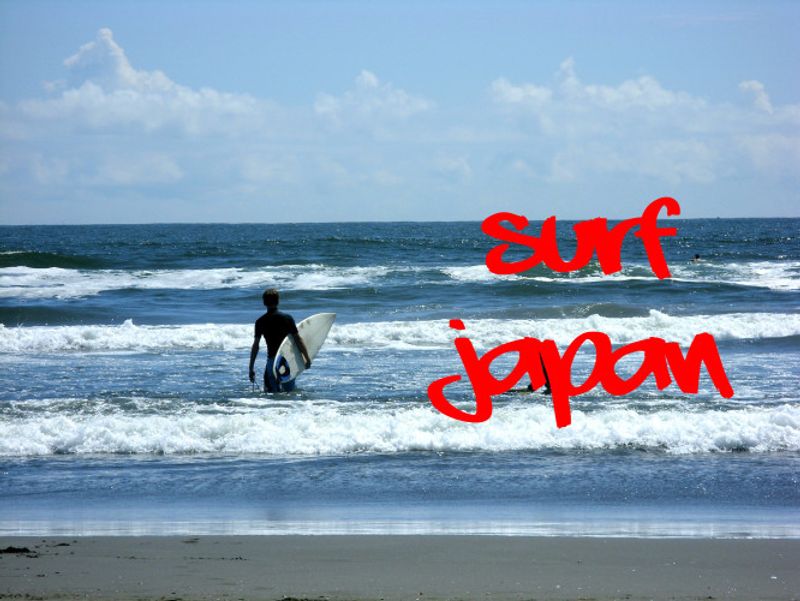Mar 27, 2015
An Introduction To Surfing In Japan

It may come as a surprise to learn that Japan is a legitimate surfing resource. But it shouldn't. With an east coast exposed to Pacific Ocean swell, and a good transportation infrastructure, there is plenty of potential to find waves. In fact, outside of industry juggernauts Australia, America and Brazil, Japan has one of the world's largest surfing populations. What prevents it from being a destination of choice for the travelling surfer, is expense, language, and a lack of genuine world-class waves. But (hopefully), you're already in Japan so the former will be significantly reduced, and as for the latter, well, with world-class waves come brawling crowds, and/or massive egos, none of which you'll have to deal with in Japan.
First of all you'll need some kit! Buying new surfboards in Japan is an inordinately expensive business. To give you an idea of the costs, take a look at the breakdowns below.
Expensive (winter)
Top of the range board: 100,000 yen +
Fin set (top end): 10,000 yen +
Cheap wetsuit (5 mm): 35,000 yen
Booties: 6,000 yen
Gloves: 3,000 yen
Leash: 4,000 yen
Deck pad: 5,000 yen
Total: 163,000 yen
Cheap (summer)
Basic board set (inc. leash, deck pad): 55,000 yen
Fin set (basic): 6,000 yen
Rash guard: 5,000 yen
Swimwear/boardshorts: 8,000 yen
Total: 74,000 yen
As you can see, getting kitted out doesn’t come cheap. Better to go secondhand. Large ‘recycle’ stores often have a selection of surfboards where you could come away with something decent for around 10,000 yen. Classified sections of expat rags like Metropolis or Kansai Scene may also be an option.
Popular beaches will have surfboard rentals where 3,000 yen could get you a board for between 2 hours - half a day.
Mainland Japan has a window of 1-3 months when you can surf without a wetsuit. So, if want to be in the water for most of the year, you’ll need some rubber. A 3-4 mm (thick) wetsuit will cover you for all seasons outside of winter. Given the propensity to urinate inside these things, you may want to go for something brand new.
If you're in Tokyo, head to the Ochanomizu area which has a whole street of shops dedicated to surf goods and culture. Murasaki Sports and Oshmans are nationwide chains that stock surf gear.

Where and Getting There
There are endless surfing possibilities on Japan's east coast (and some on the west). In the Kanto area check out Ibaraki, Chiba, Kanagawa and Shizuoka. For residents of Kansai, the nearest/most accessible surf resource is probably Isonoura, with the Wakayama coastline presenting more distant opportunities. Shikoku is one of the best surf destinations in Japan and has numerous breaks in the Kochi and Tokushima regions. Further south still, Kyushu receives plenty of waves, particularly around Miyazaki.
Unless you’re prepared to move house and relocate to the beach, the easiest way to get to the surf is by car. Plenty of the country’s premier breaks have parking, outdoor (cold-water) showers, and toilets.
This writer’s trip from Tokyo to the beach in Chiba …
Journey time: 1.5 hours
Highway fees (return): 4,000 yen
Gas/Petrol: 1,500 yen
Parking: 500 yen (winter: free)
Total: 6,000 yen
Using trains is another option, and people do take it. From Tokyo, parts of Chiba and the Shonan region of Kanagawa are legitimate possibilities. Be sure to check that the break you’re heading for is within walking distance of the station. Unless you want to be silently hated by a lot of people, don’t try to bring boards on a rush-hour train. Although this writer is unaware of any line that will not accept boards, there will be a length limit (~2 m) and they must be in a bag.
Isonoura is accessible by train from Osaka.
Taking trains is fine in summer, when you’ll only need a minimum of kit and can get dry on the beach. Before you jump on the train in colder seasons though, consider where you might change, and how you’ll carry your wetsuit. Some popular surfing areas may have club houses that are open to everyone, where you’ll find showers and lockers. Shonan is one such area.
Getting Started
To the beginner - surfing is really hard. Initially, at least. And whilst the sport is ultimately soul affirming, you’ll like have to suffer some soul destroying moments to get there. But it is emphatically worth it, so don’t give up!
Japan offers plenty of gentle waves in which to learn, and popular areas will have surf schools offering lesson during the warmer seasons. A potential difficulty could be language barriers. Given the general lack of foreign faces in the surf line-ups, Japan’s surf scene is not such an international one. Still, it is possible to find schools that, at least, have English information on their websites. The school here is one such example.

Rules, Manners, Culture
There are no barriers to entry with surfing. In fact, many consumers of the culture are happy just to look like surfers. This is easily done, and one of the best places to do it is the Shonan area of Kanagawa. Here you’ll find as many surf-themed establishments as there are convenience stores, as well as an extensive network of ocean-front walkways, beaches and parks, perfect for pretending to check out the waves. In warmer months, Shonan is full to the brim with an army of surf primpers, preeners and posers, half of whom can barely swim let alone surf!
Japan’s popular surf spots can get crowded. In such situations it’s particularly important to observe some unwritten rules. Take your time; if a surfer looks to be in a better position than you to catch a wave, let them have it. Wait for the next one. If someone is up and riding, don’t take off in front of them. When paddling out, surfers who are on a wave have priority meaning you have to get out of their way (so as not to spoil their ride). For beginners; try to find areas where there are others of your level rather than risk upsetting the experts.
Be aware of ‘locals’; surfers who live by and/or are regulars to a particular area. Surf culture dictates that they have priority over waves. Quite how you’ll spot a local is unclear. Just be sure to be nice, polite, and observe the above rules. Locals in Japan are usually very accommodating and friendly; the unbridled thuggery that sometimes occurs in America, Europe and Australia is unheard of over here.
Stay Safe
Even when things look calm, the ocean has potential dangers, and there are much better people than this writer to explain them. Be sure to do the research. Japan’s popular beaches are patrolled by lifeguards in the summer months only. If you’re unsure of your skills, never surf alone! Oh, and slap on some sunscreen. Seriously!
Other blog posts related to surfing in Japan in my blog
Surfing Near Tokyo: In this post I look at popular surf spots around the Tokyo area that can be accessed by train. OK, so getting to the surf my train isn't the most convenient way to do it (especially in winter) but it might be the only option for those expats who don't have access to a car in Japan.
The Hazards of Surfing in Japan: Actually, Japan is a pretty safe place to surf. The waves here lack a bit of power compared to more popular surfing destinations and shark attacks are extremely rare. Still, there are one or two things to look out for which I list in this post.
The Best Surf Shops in Tokyo: Just looking like a surfer is half the game here in Japan. There are plenty of surf shops to choose from in Tokyo, not necessarily for buying boards, more for just getting kitted out with the clothes and surf trinkets!
Is It a Shark? Even worse … It’s a Gaijin!: Surfing In Japan: Localism towards foreigners isn't much of a problem in Japan. In my experience, Japanese surfers usually just let you go about your business (so long as you're behaving yourself). It was a bit of an annoying experience then, we I was exposed to my first, and so far only, incident of 'foreigner' based discrimination in the surf line up.
Online Resources
For a simple weather check, and ocean warnings in English …
http://www.jma.go.jp/jma/indexe.html
For a breakdown of Japan’s surf spots …
http://www.wannasurf.com/spot/Asia/Japan/
To check a surf forecast …
http://www.surfline.com/home/index.cfm



5 Comments
Yuju
on Mar 27
I know recycle store called "bookoff" has many selection of surf stuff.
Fishmeister
on Oct 15
<a href="http://bit.ly/Surf_Travel">Surf travel</a> to Japan's east coast seems to be getting more popular, hope I can make a trip out there before it gets too crowded!
KamaT
on Oct 15
There are already plenty of crowded spots. The Shonan area (just south of Tokyo) is off the charts. Check out this Instagram from Outerknown when Kelly Slater was is town. https://instagram.com/p/6JIqrczV14/?taken-by=outerknown Still, there are plenty of quiet spots especially on weekdays, and you'll probably be the only foreigner in the water. Locals are pretty laid back too. Or polite, at least!
surfjapan
on Jun 8
Looking to learn how to surf here in Japan? Check out Splash Guest House based in Katsuura Chiba on the beach called Hebara they do great surf lessons and are really easy to get to only 1.5hrs by bus from Tokyo station or on the train. They also have a great learn how to surf video which you watch before the lesson. they have a sister site called Surfing In Japan as well which is a great resource website explaining all the top spots to surf. If you are just looking to rent a surfboard they do all that as well , many many happy customers. Well recommended. These guys are fully set up for the complete beginner to the most advance surfer.
Richard123
on Sep 12
@Tomuu Hi mate, is it possible for me to email you. I got a few questions about surfing in Japan and you sound like a guy who knows a thing or two. Cheers